Students of the the subject International Collaboration have taken most of the pictures below. They are 13-16 years old, attending 8th, 9th and 10th grade. They have worked in groups of 4-5, using their cell-phones as cameras. International Collaboration is an optional subject, which is taught once a week, except in weeks when there is an alternative schedule.
To get to Skien, a city of around 50.000 inhabitants, you might book a flight to any of three nearest airports. Either to Torp in Sandefjord, Rygge in Moss, or the main airport, Gardemoen, north of the capital, Oslo. From Torp, which is the closest one, you will be in Skien within an hour by either car or the airport bus shuttle, NOR-WAY Bussekspress. From Gardemoren it is about three hours. The city can also be reached by train, NSB.
Skien is the 11th biggest city in Norway, and it is the administrative centre of the county called Telemark. It covers an area of 779 km2. Skien is one of the oldest cities in Norway, dating back to year 900. Skien used to have one of the most important ports in Norway for shipping timber, and it is the birthplace of the playwright Henrik Ibsen.
The city centre is not so big, so you may easily get around by walking or biking. It is also possible to travel by bus. The buses M1, M2 or M3 will even take you to the neighbouring municipalities, Porsgrunn and Bamle. Landmannstorvet is the name of the bus terminal, and there you may also catch a taxi. NOR-WAY bussekspress will take you to different destinations within the county or to other cities in Norway. Travelling by train is another option if you want to visit other cities in Telemark or Norway.
Below you may watch some videos of Telemark.
TOURIST ATTRACTIONS
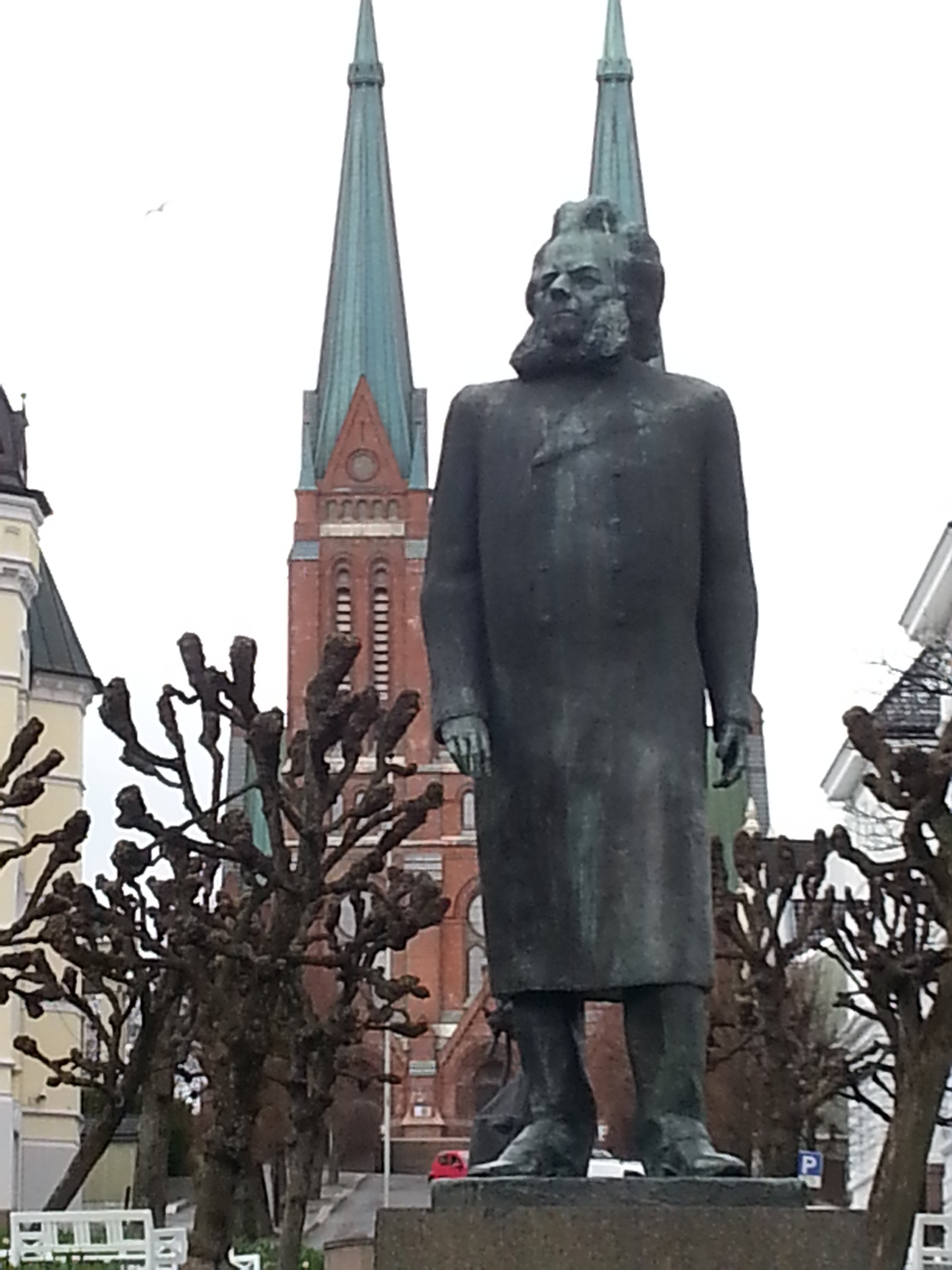
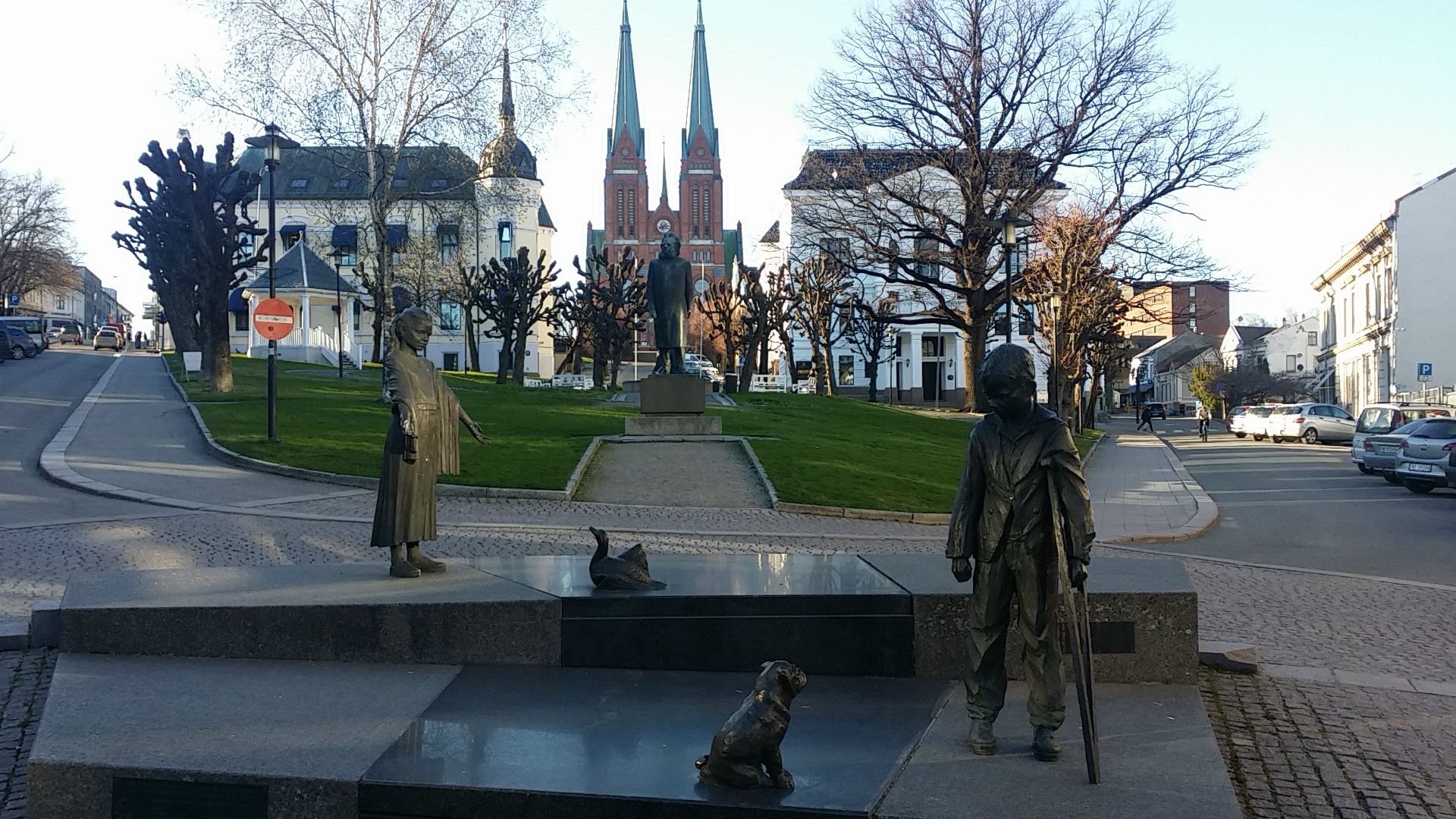 Henrik Ibsen is a worldfamous playwright who was born in Skien in 1828, into a well-off family. His father was a merchant and his mother an artist. Ibsen himself showed an interest in the arts from an early age. When he was eight, his family was thrown into poverty, because of problems with his father's business. The family had to move to a farm on the outskirts of town, Venstøp. There Ibsen spent his time reading, painting and playing magic tricks with his sister, Hedvig. Ibsen belongs to the literary period called social realism, and he wrote, amongst others, the plays A Doll's house, Hedda Gabler and The Wild Duck. In the image to the right you may see some of the characters from his plays. The statues are located in the heart of the town, that is, in Ibsenparken, translated as The Park of Ibsen. In the background you may also catch a glimpse of the Church of Skien. Henrik Ibsen is said to be the father of Skien. He died in 1906, in the capital of Norway, Oslo.
Henrik Ibsen is a worldfamous playwright who was born in Skien in 1828, into a well-off family. His father was a merchant and his mother an artist. Ibsen himself showed an interest in the arts from an early age. When he was eight, his family was thrown into poverty, because of problems with his father's business. The family had to move to a farm on the outskirts of town, Venstøp. There Ibsen spent his time reading, painting and playing magic tricks with his sister, Hedvig. Ibsen belongs to the literary period called social realism, and he wrote, amongst others, the plays A Doll's house, Hedda Gabler and The Wild Duck. In the image to the right you may see some of the characters from his plays. The statues are located in the heart of the town, that is, in Ibsenparken, translated as The Park of Ibsen. In the background you may also catch a glimpse of the Church of Skien. Henrik Ibsen is said to be the father of Skien. He died in 1906, in the capital of Norway, Oslo.
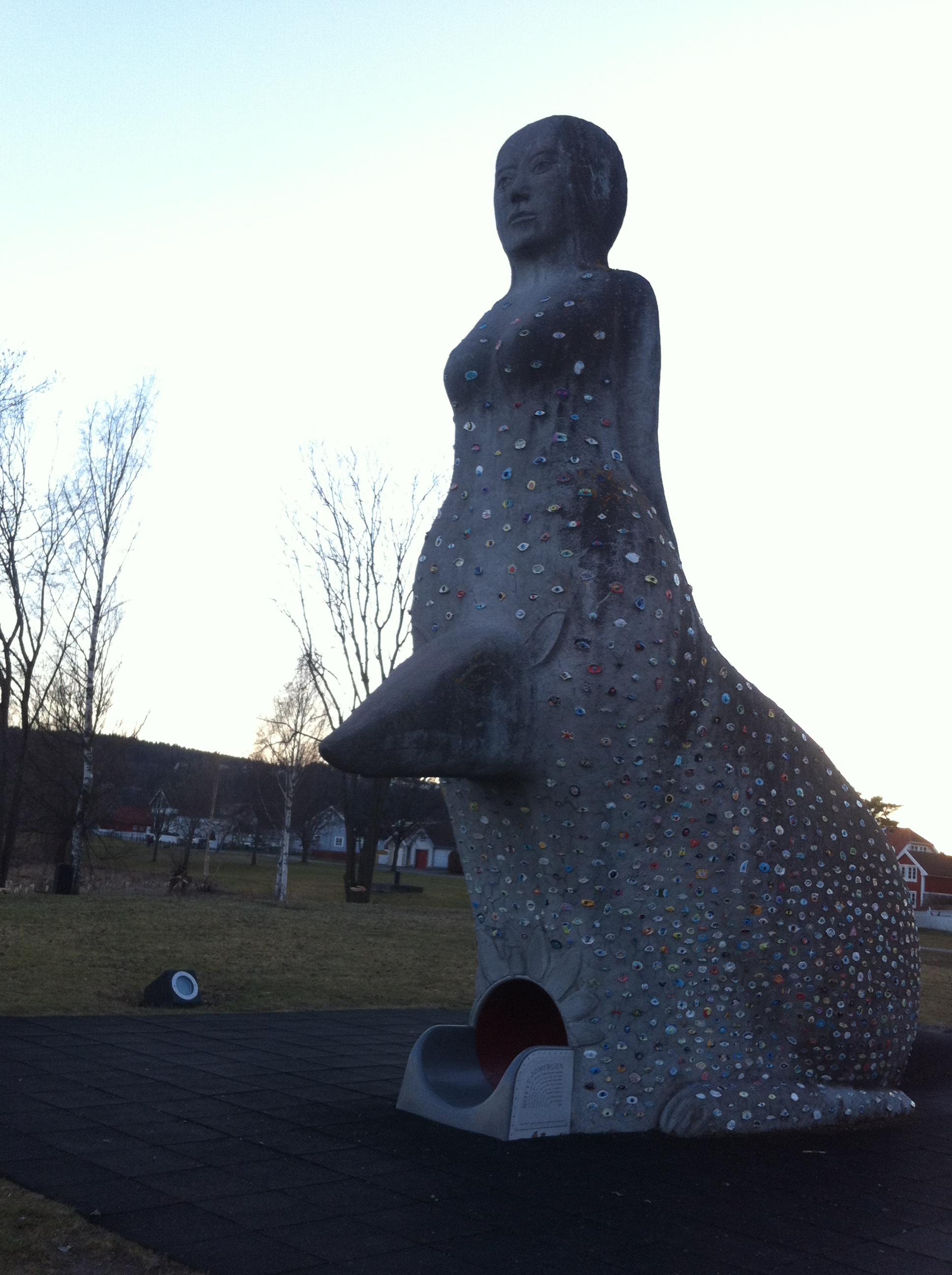
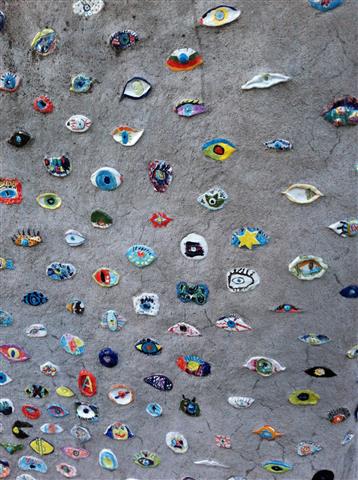
Rottejomfruen is a monument which might be translated to The Rat Virgin in English. It is a statue and a children's slide at the same time. The character is from a story by Henrik Ibsen called Lille Eyolf. Children from all the primary schools in Skien have made the porcelain eyes decorating the body of the statue. The statue is located in the area of Skien called Bakken, close to the beach Bakkestranda. Rottejomfruen overlooks Hjellevannet which is part of Skienselva, or in other words, The River of Skien.
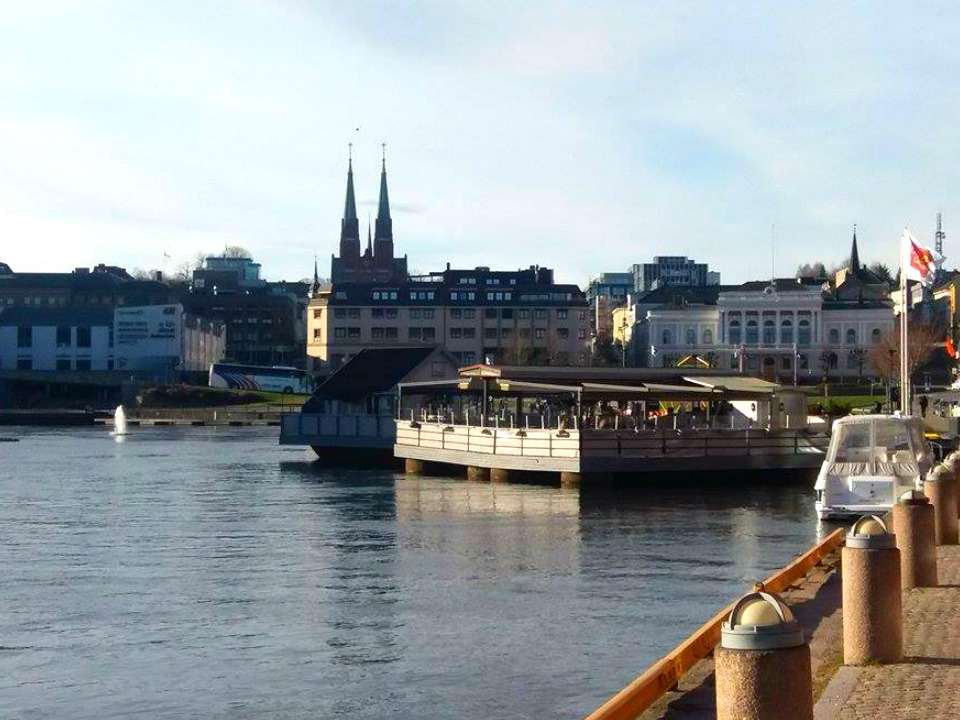
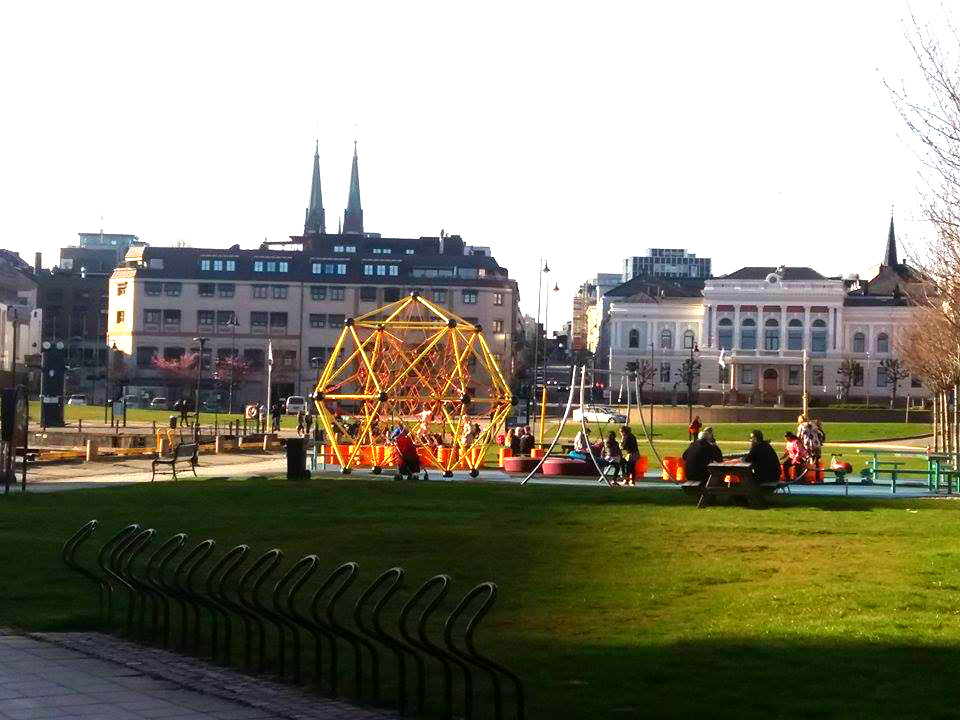
Brygga, or The Quay, is located south in the city centre. It is a nice area of the city, where many important events take place. For example, Skien Food Festival, which takes place in August, or The Christmas Market right before Christmas. You may enjoy a great dinner in one of the many restaurants which you find along the quay. You can get to Brygga by using any bus in Skien, because it is right in city centre. You might also just stroll southwards from the bus terminal. In the picture to the right, you might see the Town Hall, right behind the playground. On May 17, Norway's National Day, all the schools in Skien participate in a parade, which ends in front of the Town Hall. It is a very colourful day, with lots of flags and many people who wear their national costume, the bunad. Here you may watch an amateur video clip.
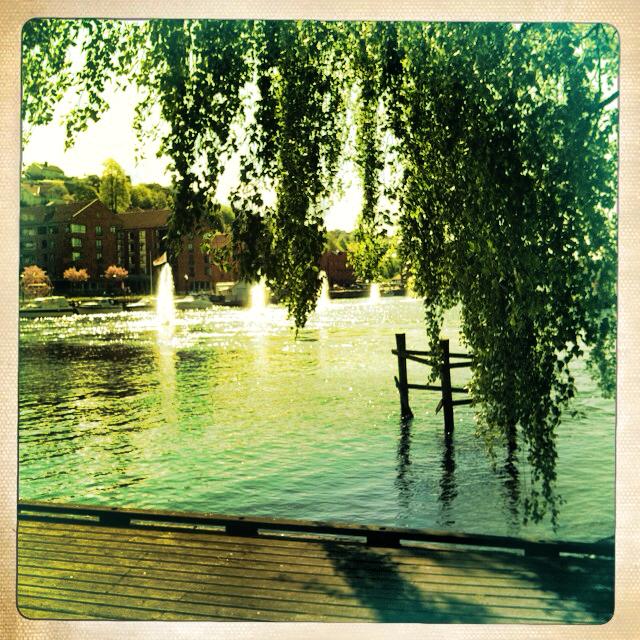
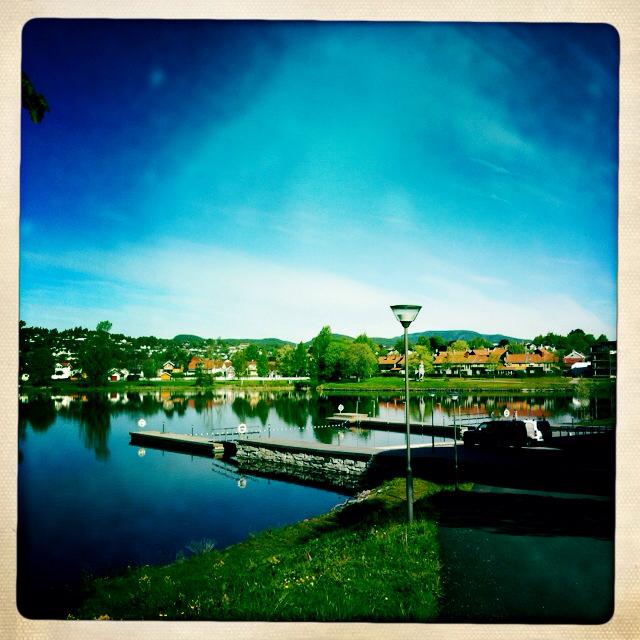
The Morild Light Project is an art project created in 1998, and which wants to celebrate the history of Skien as an old trading centre. Skien used to be a very important town for the transportation of goods, such as timber. Skien used to have many mills, located in the area of Klosterøya, powered by the force of Skienselva, The River of Skien. None of the mills are active today. Skien has been described as the place where city meets country, water meets landscape, and industry meets trade.Telemarkskanalen, that is, The Channel of Telemark, runs through Skien as Skienselva, The River of Skien. Telemark is the name of the region where Skien is the region capital. The Morild Light Project consists of fourteen lights, which you can see as small, illuminated fountains along the Skienselva. You may spot some of the fountains in the picture to the left, but they are particularly beautiful at night. The impression also changes when there is a change in water level, caused by the channnel locks. In the picture to the right, you might see Hjellevannet, one of the water basins in Skien. The other one is called Bryggevannet. They are separated by the channel locks which are situated at Klosterøya, the peninsula where Skien had its historical mill industry.
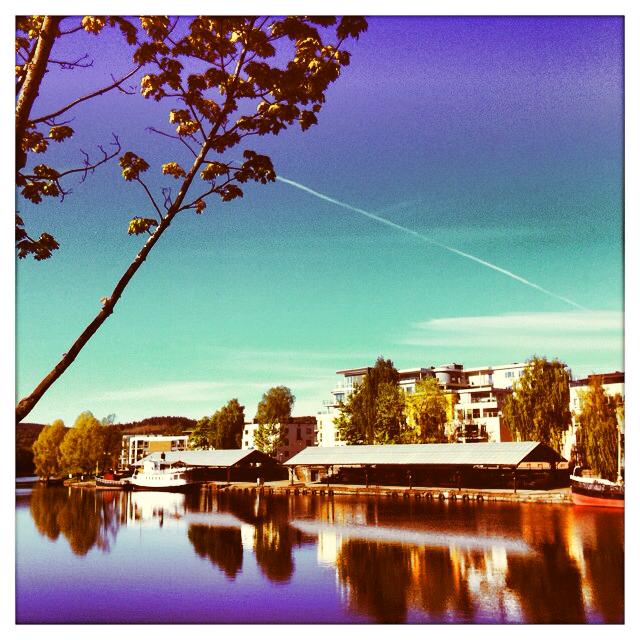
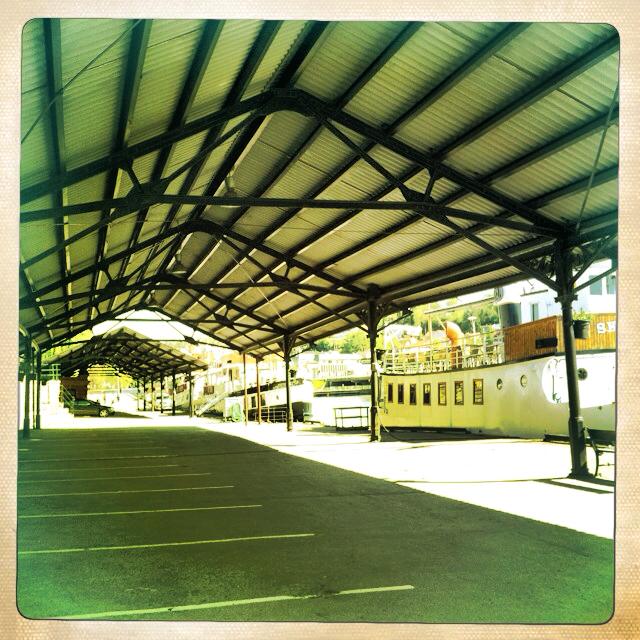
Hjellevannet is the first water basin in Skien, if you arrive in Skien by water from the northern part of the region. The Channel of Telemark, which runs from the northern part of our region Telemark, changes into Skienselva, The River of Skien, when it reaches Skien. Hjellevannet is part of Skienselva, and it has its own quay, as you might see in the picture to the left. In the picture to the right you see the area of the quay where you may take a boat ride along the wholeTelemarkskanal. It is a very popular tourist attraction, especially at summer time.
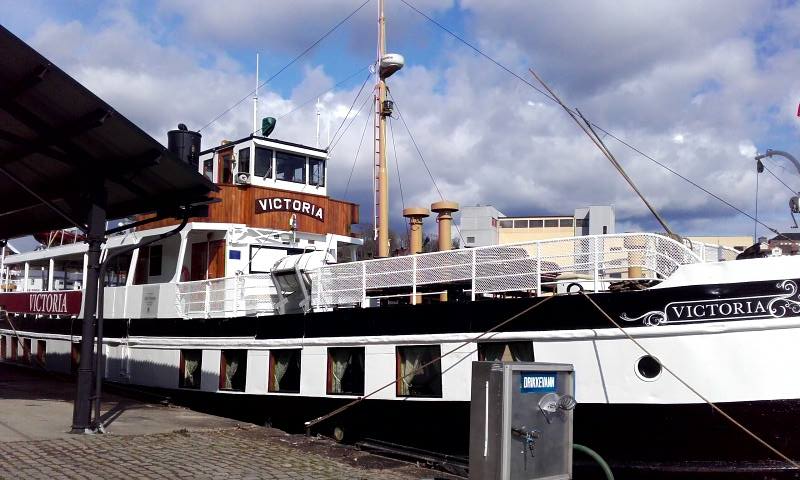
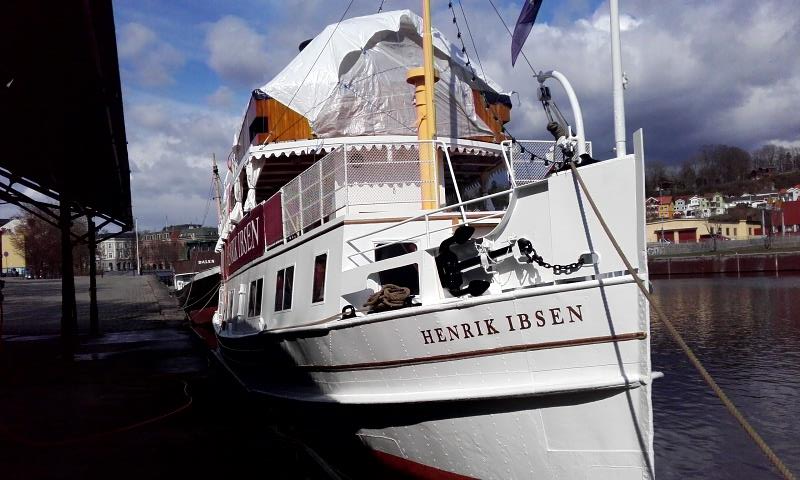
These are the Victoria and Henrik Ibsen boats, on which you may take a ride along the Telemarkskanal, the Channel of Telemark, all the way from Skien to Dalen in the north of our region, Telemark. The boats depart from the quay at Hjellevannet, in the city centre. The Victoria boat has been named after one of Ibsen's plays. You may find more information in English here.
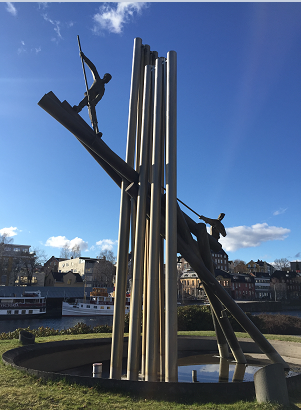
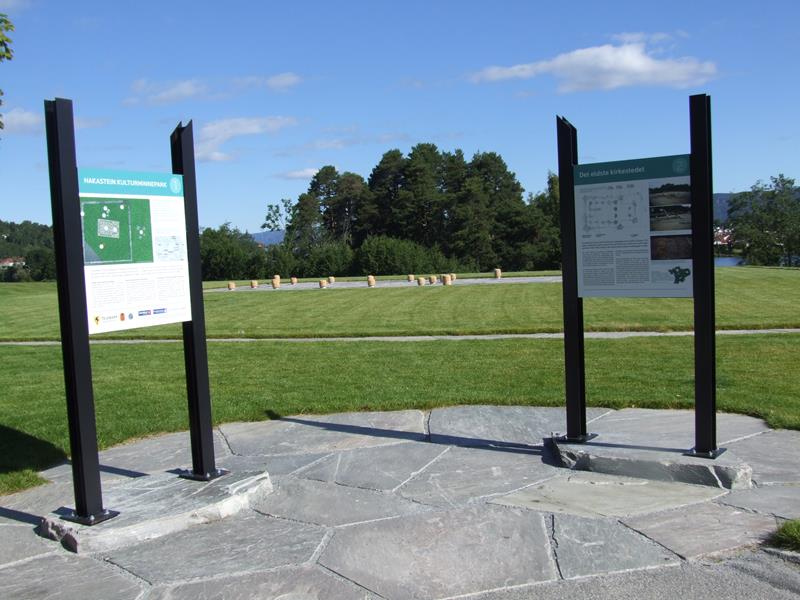
The image to the left is a popular attraction in Skien called Fløtermonumentet. As you can see, there are two men who are trying to loosen timber with their floating stick, so as not to get their feet stuck. This is something Skien has done for 1000 years. To get to this spot, you need to walk south, straight down from the bus terminal, pass the Town Hall and the shopping centre Arkaden, and then cross the bridge you see on your right.
The picture on the right shows Hakastein Kulturminnepark, a memorial park. In this place archeologists have found evidence of one of Norway's eldest known churches. It dates back to the year 1100 A.D. The have also found Christian graveyards from the 800s, pagan graveyards from the 1600s and 1700s, and fossil from around year 0.
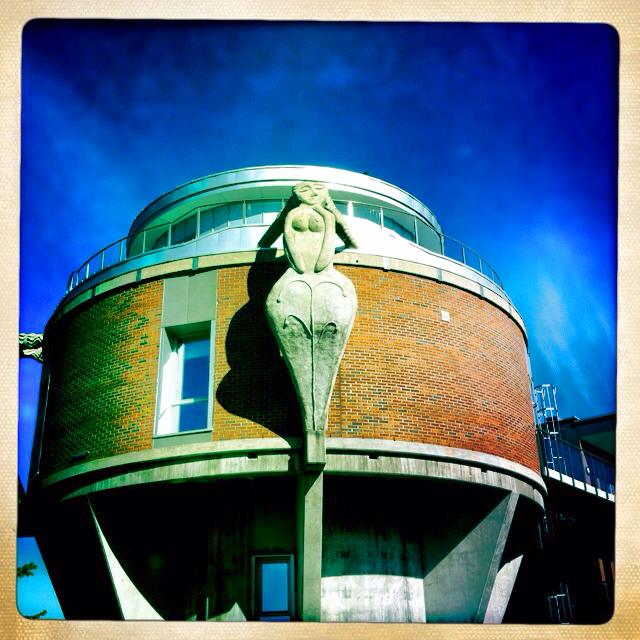
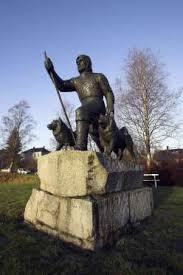
Damer i Blest are a range of women statues, hanging by their hair on the sewage treatment section of the old paper mill, Union. The Factory closed its gates in 2006, but the building was partly preserved and has been transfromed into fancy apartments. You may find this attraction on the peninsula Klosterøya, which separates Hjellevannet and Bryggevannet.
The Hjalmar Johansen Statue you see in the picture to the right is located in Lundedalen, a small valley which runs through the northern part of the city. Hjalmar Johansen was a famous Norwegian polar explorer who was born in Skien in 1867. He accompanied Fridtjov Nansen to the North Pole and Roald Amundsen to the South Pole. It is said that without Hjalmar Johansen, none of the other explorers would have succeeded as they did. Johansen also founded the sports club Odd in Skien, and he became the best Norwegian gymnast of his generation, in addition to being an excellent skier.
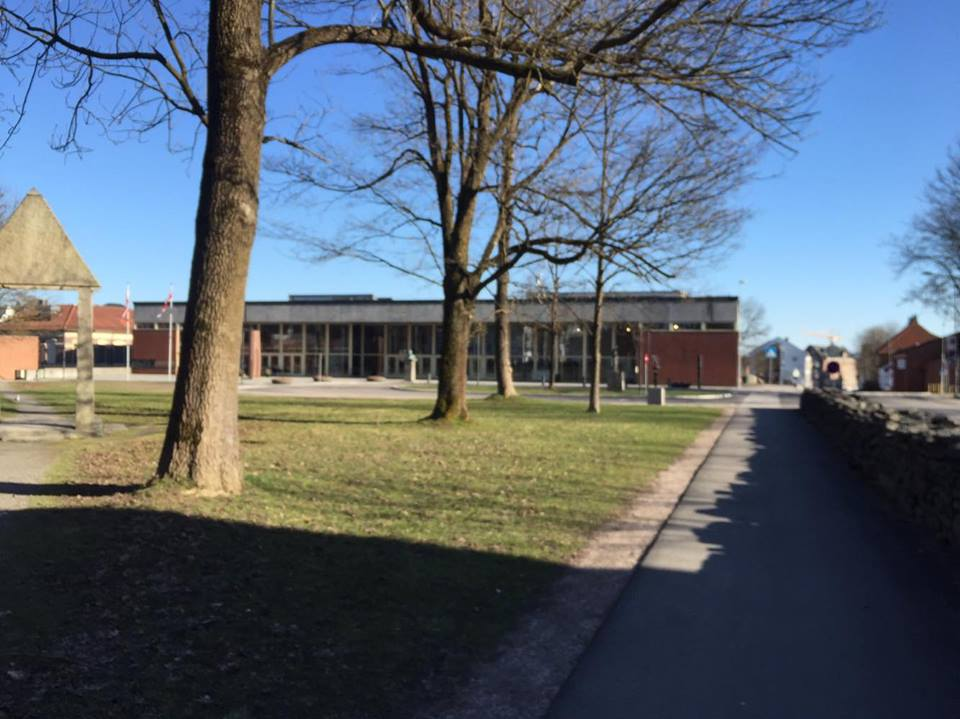
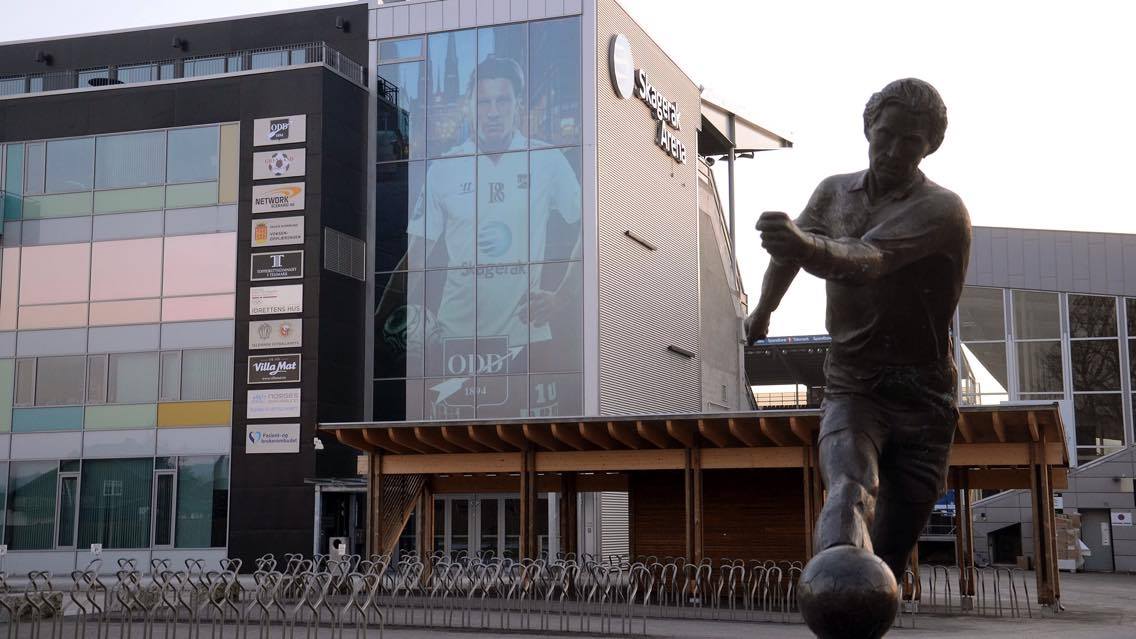
The first picture shows Ibsenhuset or "The House of Ibsen". It got its name after Henrik Ibsen, the world-famous writer from Skien. Here you can watch plays, concerts and different shows, or attend an art exibitions. The city library is located within the same building, and there is a nice restaurant there, which is called Henrik & Company.
The second picture is of Odd Football Stadium. Odd is one of the best football teams in Norway, and the stadium fits up to 13 500 people. It is not very far from our school, and several of the students at Mæla play for Odd in the youth league.
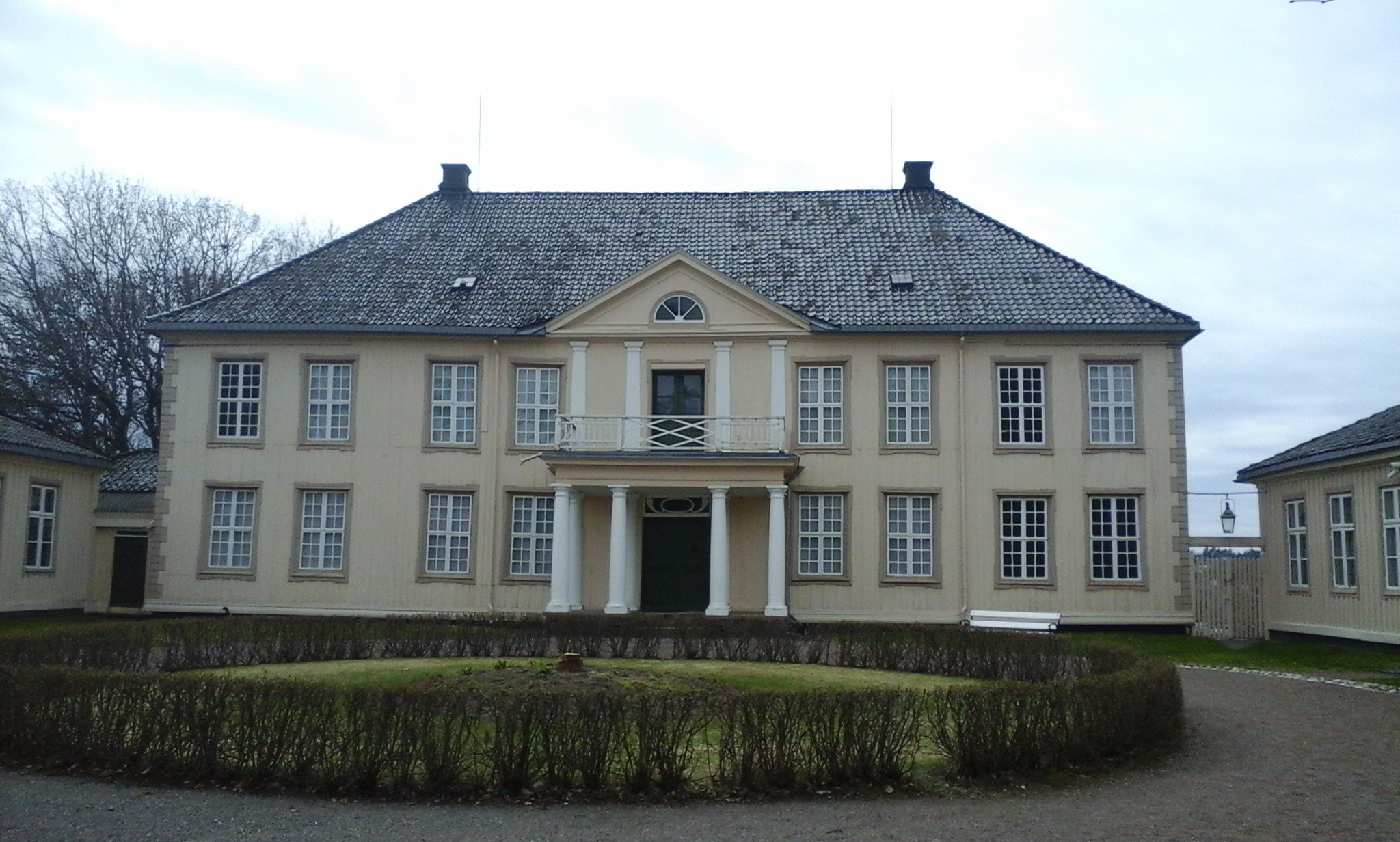
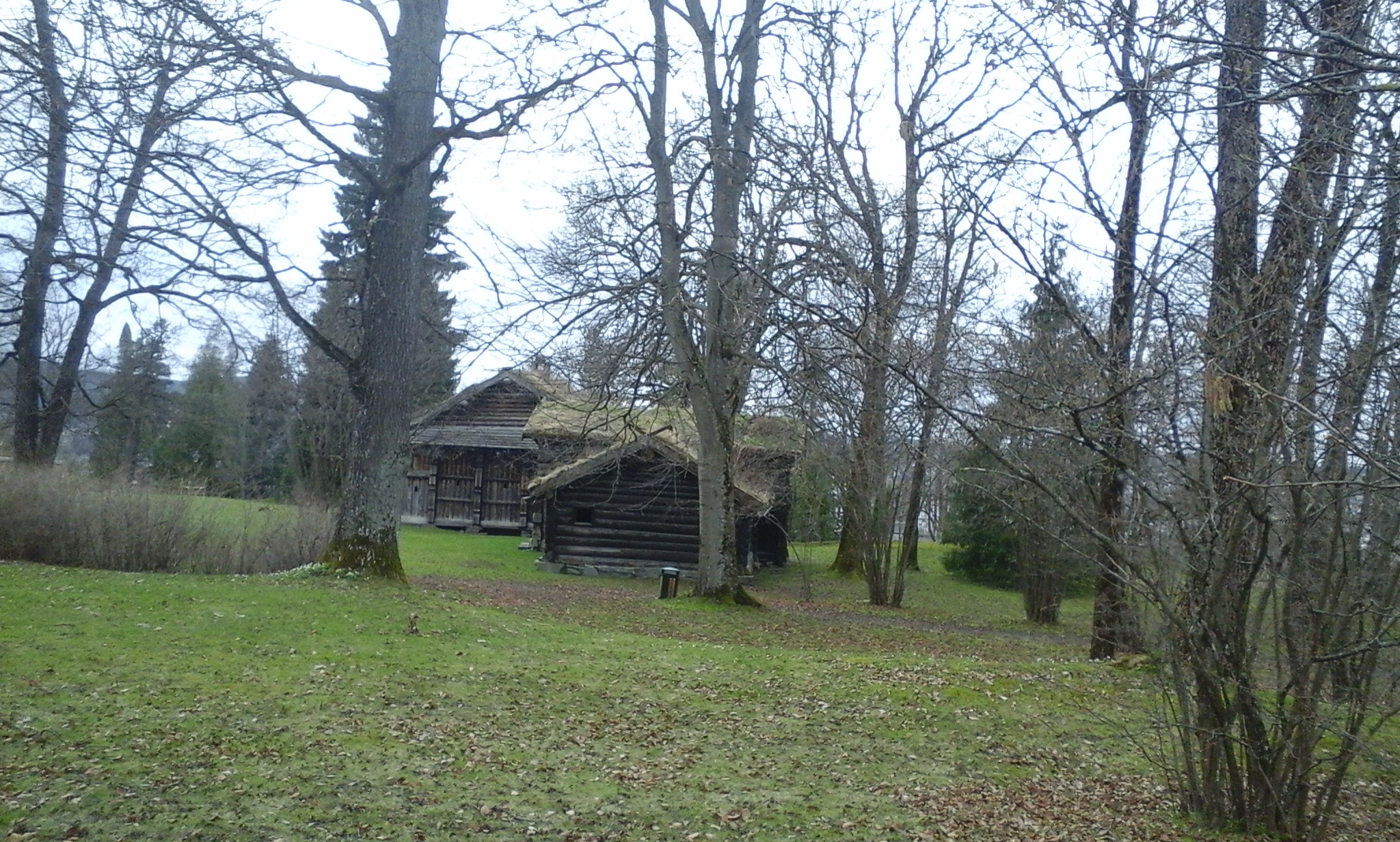
Brekkeparken in Skien is a beautiful place to visit with your friends and family. It is a big, English-styled landscape-park, with a playground for the children and several old houses, typical of the building tradition in different parts of our region, Telemark, in the past. Some of the houses are from the Middle Ages, while others are from the 1700s. The houses are called "Telemarksstuer". "Stue" actually means sitting-room. Here you can go inside and see how it was to live in Norway in, for instance, the 18th century. Single, big rooms, small doors, low ceilings, and grass on the roof. That's a Telermarksstue. The builing you see on the picture to the left is one of the most known buildings in Brekke-parken. It is very beautiful, and it is especially known for its floral displays, in addition for the legend about "The Grey Lady", Den grå Dame. Here you can take pictures, play, enjoy live jazz in summertime, get a very good view of the city and enjoy a quick snack or dinner at the restaurant at the far end of the park. To get to Brekkeparken from the bus terminal, walk a block to the south and take a left. There are some large stairs there called Brekketrappa, and if you walk to the top, Brekkeparken is right in front of you. If you get lost, you may also ask a local person and he or she will definitely show the way and directions. Enjoy!
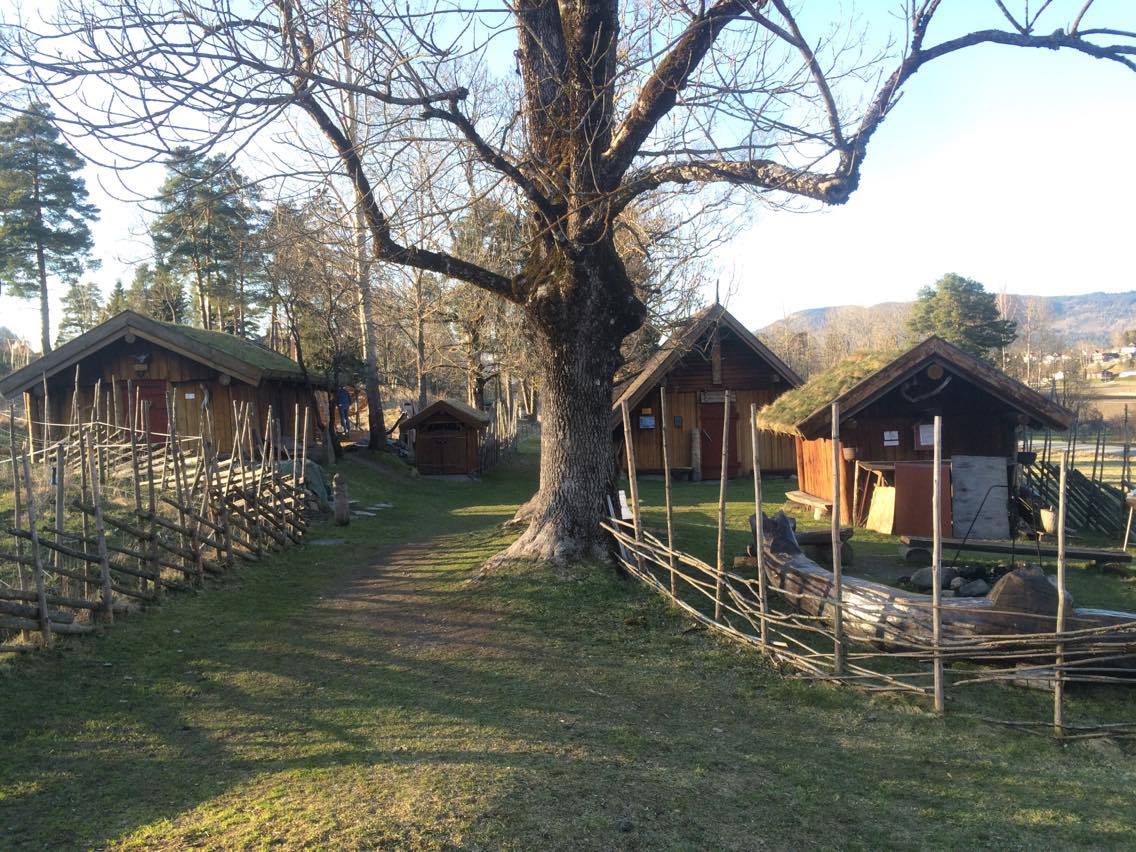
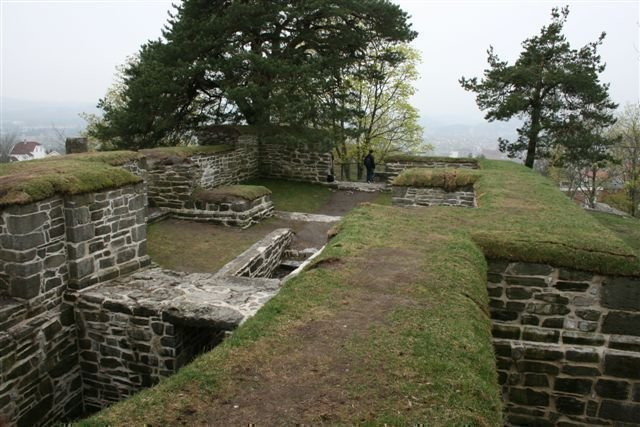
The image to the left is Jernaldergården på Århus, a farm from the iron age. This is a replica of how the farms in Norway looked like during the iron age. It was finished September 14, 2005. To get there from the city centre, you can take the bus M2, from the bus terminal called Landmannstorget towards the location called Falkum. From there you have to follow the road Århusveien. After about 1 km, you will see the farm at your left. Our school is not very far from here.
In the other image, you may see Kapitelberget. Here archeologist have found a church from around year 1100, that is, from the Middle Ages. It is a so-called crypt-church, of which there are only four in Norway. What also makes Kapitelberget interesting is that the ruins are located on top of a fossil coral reef, which was formed 430 million years ago. We hope you find it is worth a visit. Kapitelberget is located in the south-west of the city centre.
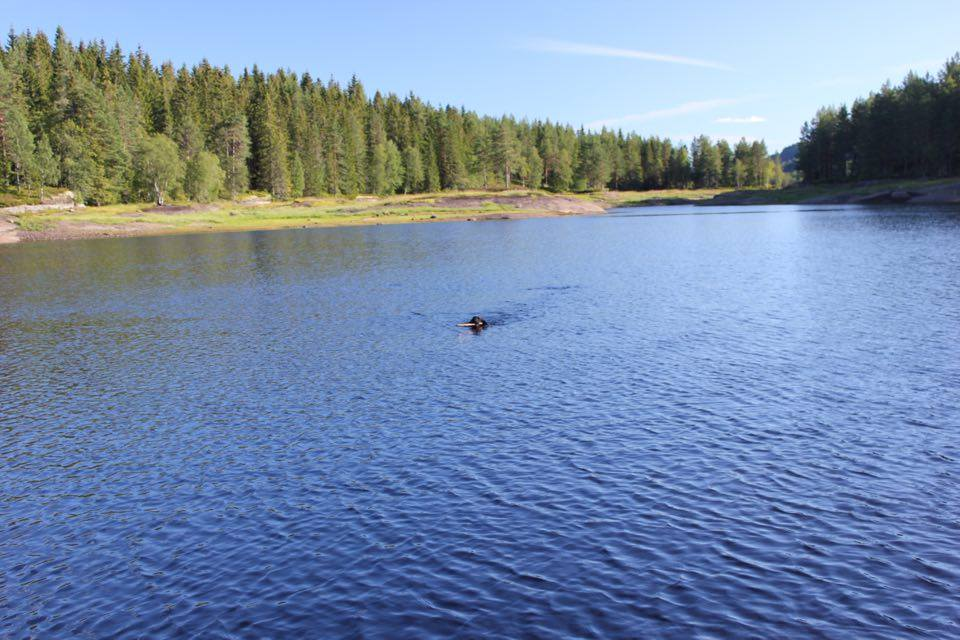
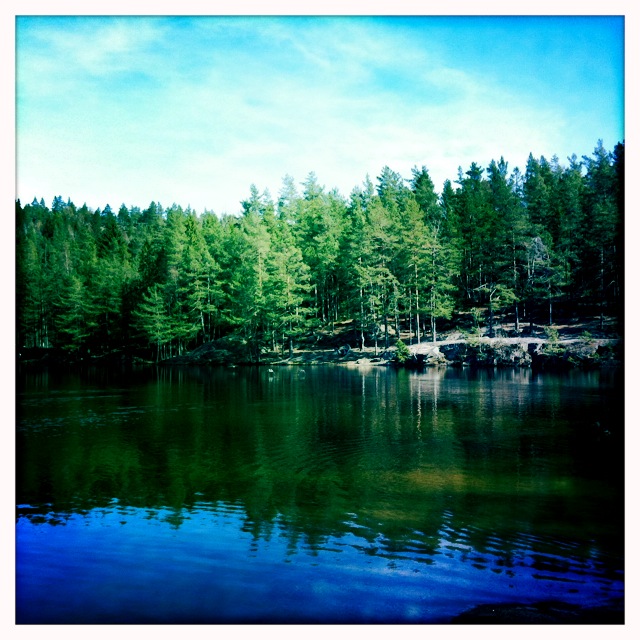
The above pictures are from Fjellvannet (left) and Slettevannet (right). Here you can sleep in tent and, for instance, light a bon-fire from October until May. If the weather is fine, you can go for a swim and have fun. If you have a dog, you might bring it too. The distance to both places is some kilometers by car, but you might also ride a bicycle to get there. Both places are popular when schools arrange field trips.
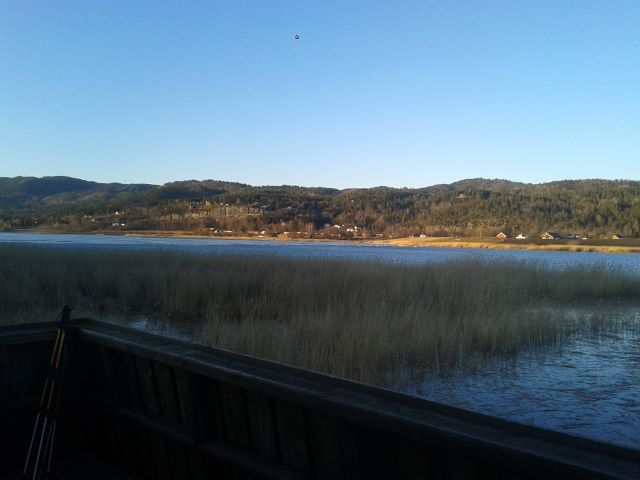
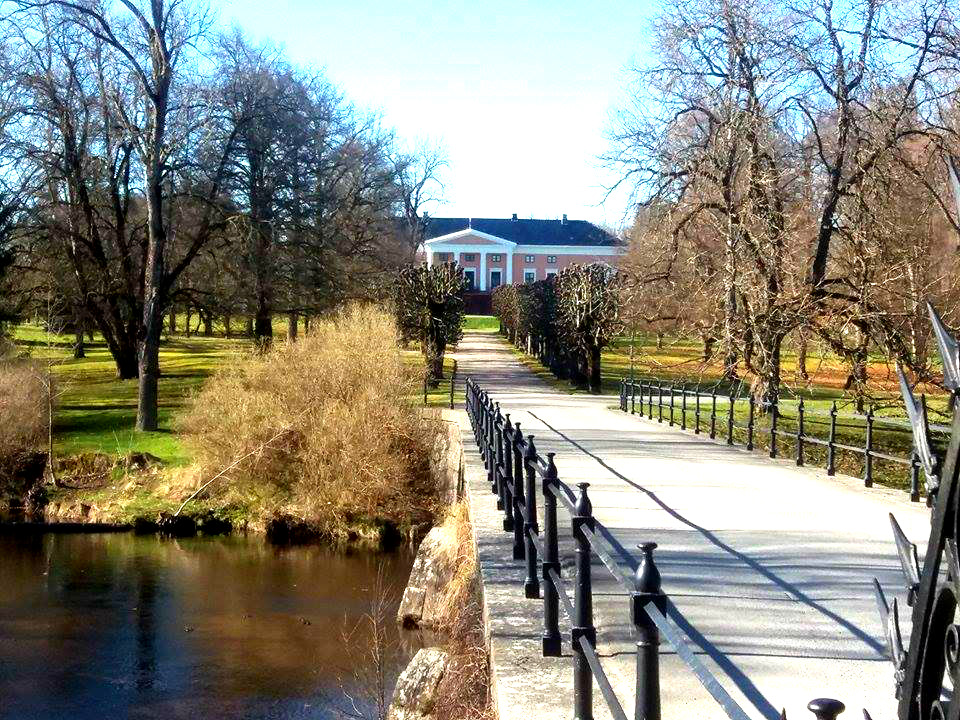
The picture on the left is from the local bird reserve by the lake Børsesjø. To get here, you go to Gjerpen Kirke (The Church of Gjerpen), find the track, and follow it down to the bird tower, where you can observe different species of birds. There are information signs telling you about the species you might expect to see there. More than 230 species have been observed in the area.
The pink building you see in the other picture is Løvenskiold Fossum Hovedgård, that is, the mansion of the Løvneskiold family, which is a Dano-Norwegian noble family. The building was built between 1811 - 1818. Løvenskiold is surrounded by nature and a beautiful large park with many power stations. The story of Fossum dates back to 1539, when the Iron Work of Fossum was founded by King Christian III, and it was not until 1739 that the property entered the Løvenskild family. Later on, they turned to trading timber instead and producing electricity. Today the mansion is the private home of the family, but if you want to spend a nice weekend there, you can rent a small cottage within the territory. You can get to Løvenskiold by heading North from the city centre. You may either walk, ride a bike or go by bus.
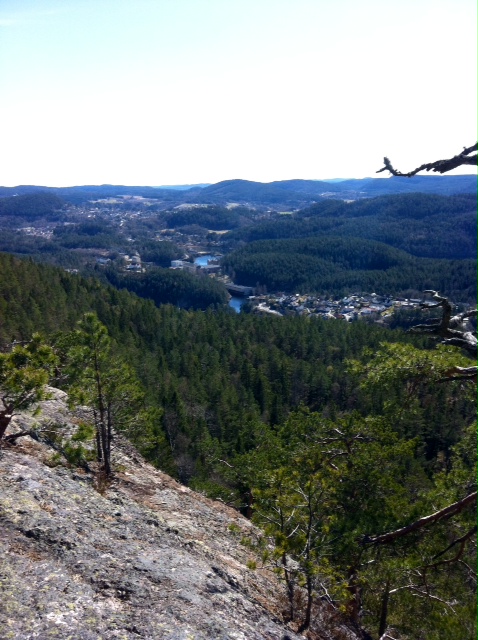
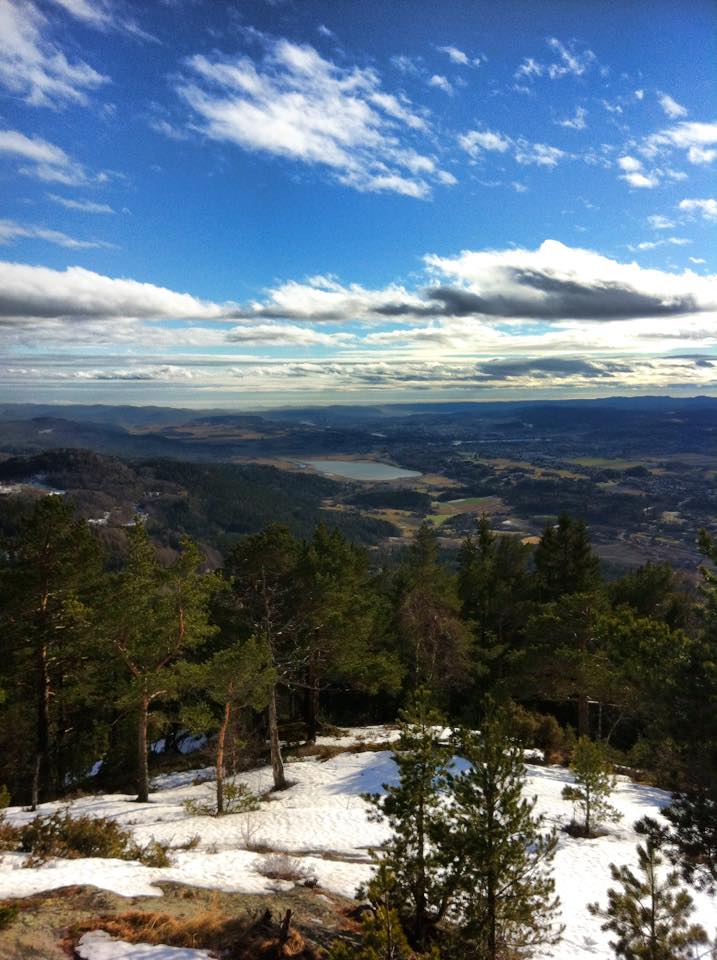
In Norway it is very common to go hiking in the woods or in the mountains, especially at weekends. Most Norwegians enjoy spending time in the nature. On Sundays people put on their sneakers and head out, alone or with family and friends. There is no other purpose, but to breathe fresh air and take in the the beautiful scenery. There is a saying in Norway which goes "There is no such thing as bad weather; just inappropriate clothes", which means that there is no excuse for not spending time outside if you just put on the right clothes. The pictures above show two of the most common peaks in Skien, Fantekjerringkollen and Skrehelle.
COOL SHOPS FOR YOUNG PEOPLE
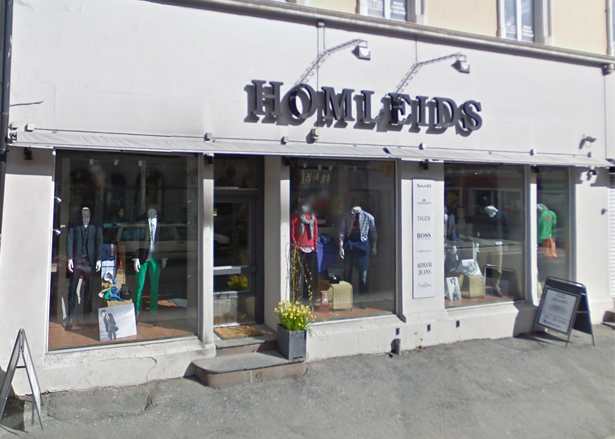
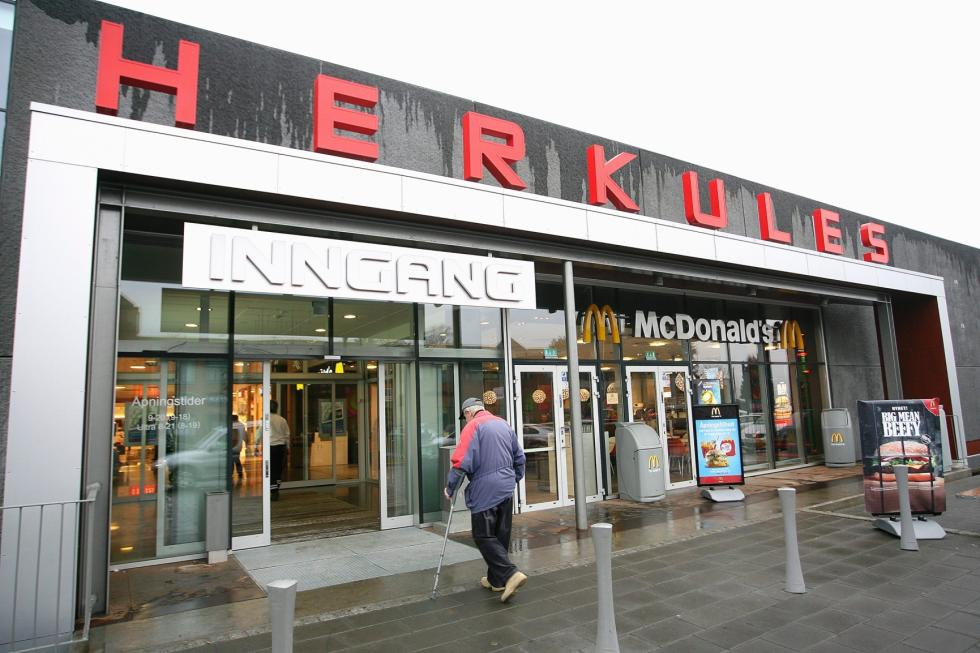
This is Homleids. Homleids is a popular fashion store in Skien. In this store you can find different brands of clothing, for instance if you need a nice suit or just an informal outfit.
In the other picture you can see Herkules. Herkules is the largest shopping center in Skien. Here you might find almost everything you need if you plan on visiting Skien. You can also have a bite to eat, such as pizza, fastfood, sushi, frozen yoghurt and more. If you need a hair-cut or some new glasses, this is the place. Many young people like to hang out in Herkules after school or at weekends.
SUNSET
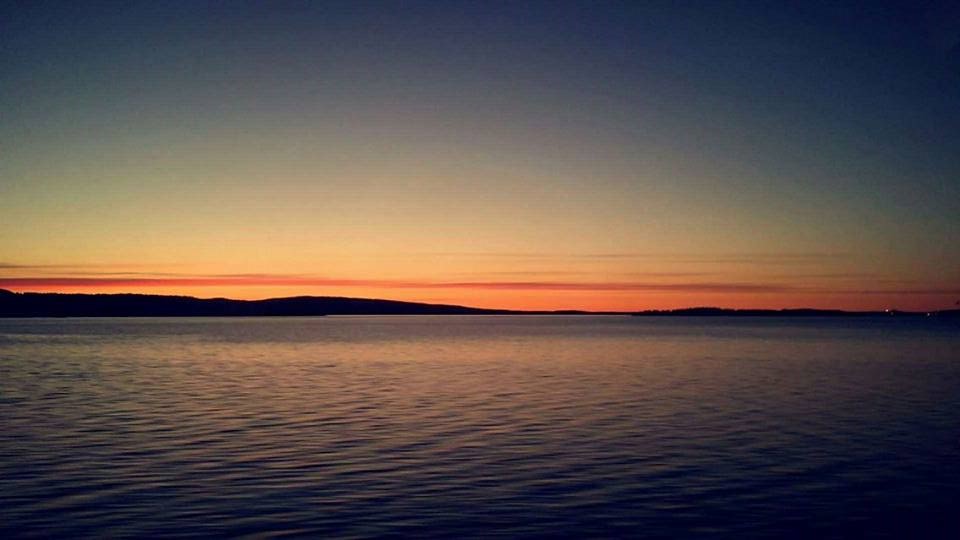
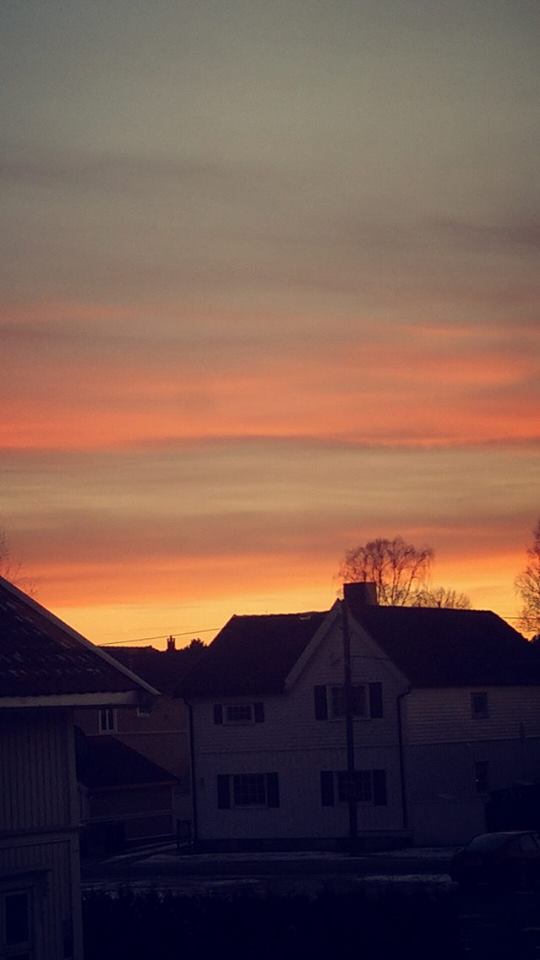
In Southern Norway the daylight does not last long during the winter months. It gets light at about 9 a.m. and dark at 3 or 4 p.m., depending on if it is a cloudy day. On the other hand, in summer sunrise is at about 4 a.m. and sunset after 10 a.m. In Northern Norway we have the phenomena of the midnight sun. Read more about it here.
LOCAL CUISINE
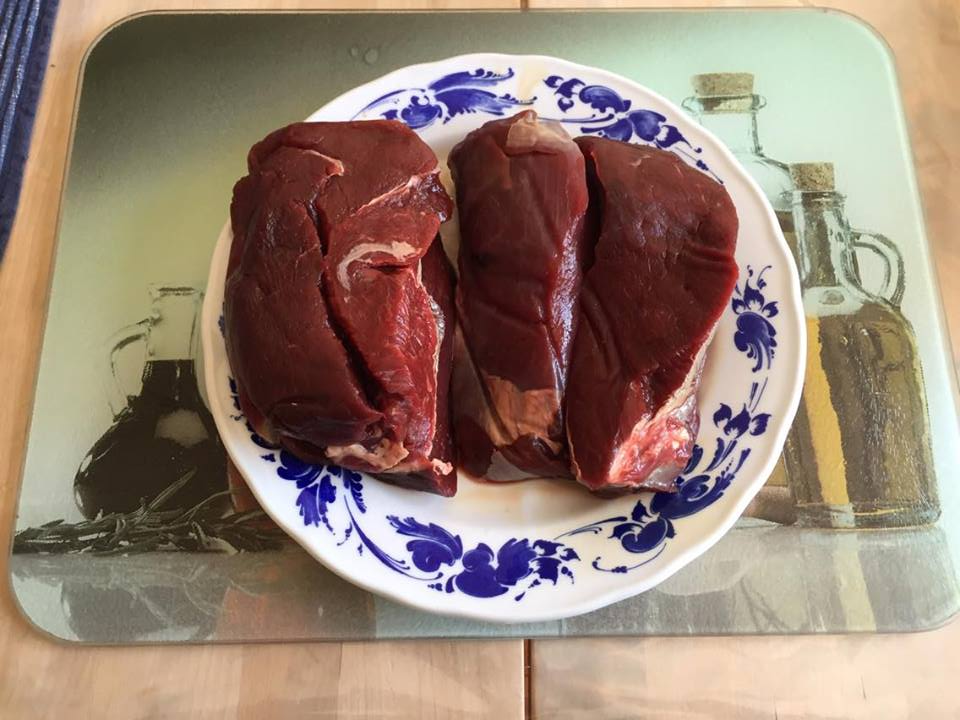
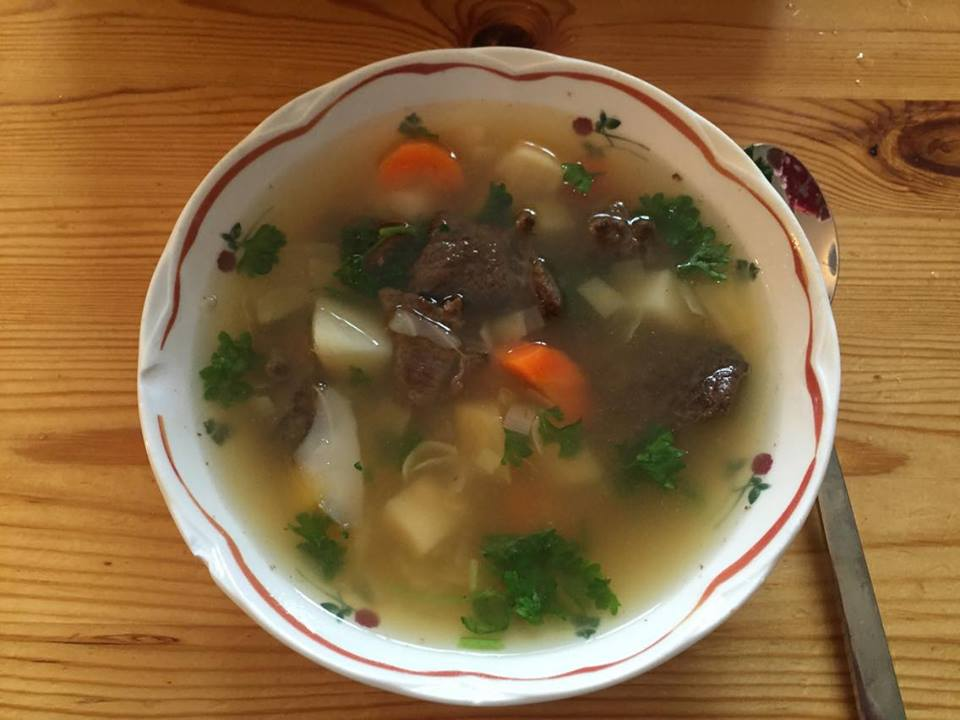
Moose are the largest of all the deer species. The moose are very known here in Norway, and many Norwegian people like to hunt this animal. You may find moose pretty much in all the forests in Norway, but you can't just go and hunt it whenever or wherever you like. You need to have a license, in addition to paying a sum of money, in order to be allowed to hunt. In this picture, we have made a soup with moose meat and some common vegetables in Norway, such as carrots, potatoes, swede, parsley root, cabbage, and leek.
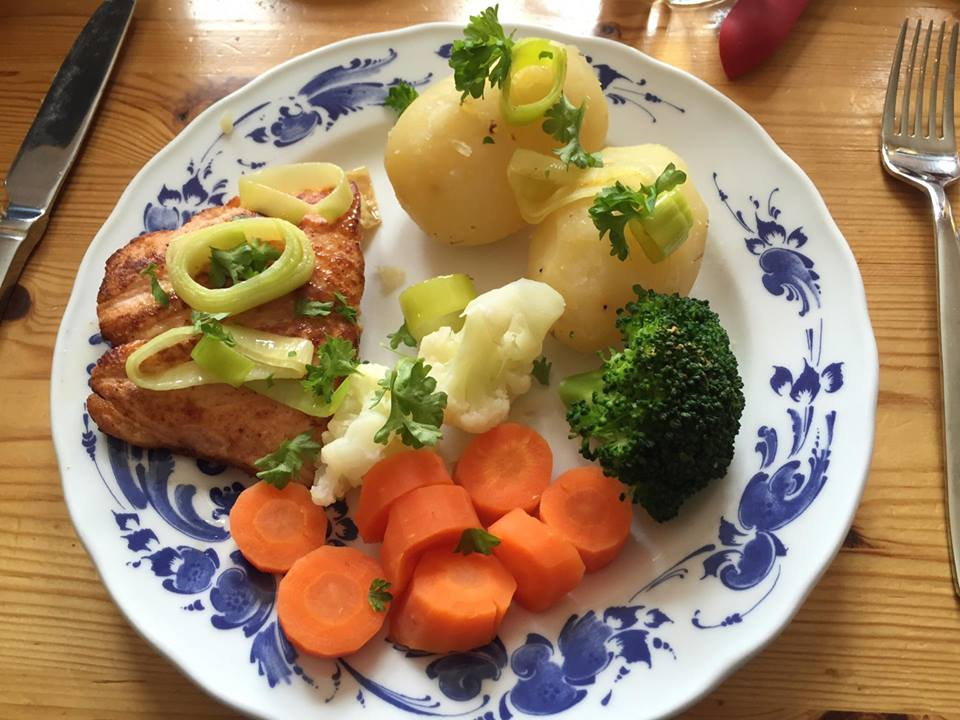
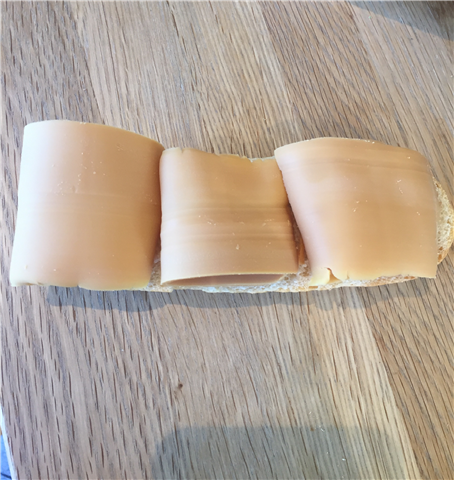
Salmon is an Atlantic fish, which you can find here in Norway. Salmon is delicious for dinner and many people love to go fishing it. There are many rivers in Norway, where you might find salmon. The closest place to fish salmon is in Skienselva, the River of Skien, but you may also fish salmon in a river called "Lågen". However, in order to go fishing, you need to buy a license for fishing. In the dish in the picture to the left, there is salmon and some Norwegian vegetables like carrots, potatoes, cauliflower, leeks and broccoli. We eat a lot of potatoes in Norway. This is related to our history.
The sandwich you see to the right has a a cheese called brunost. It is made of goat milk and is part of the traditional Norwegian cuisine. If you translate it, it would be called brown cheese. We eat it on bread at breakfast, lunch or supper, and it tastes great on waffles too. It tastes a bit like caramel, but some people think it has a bitter taste, and not everyone likes it.
RECREATION AREA
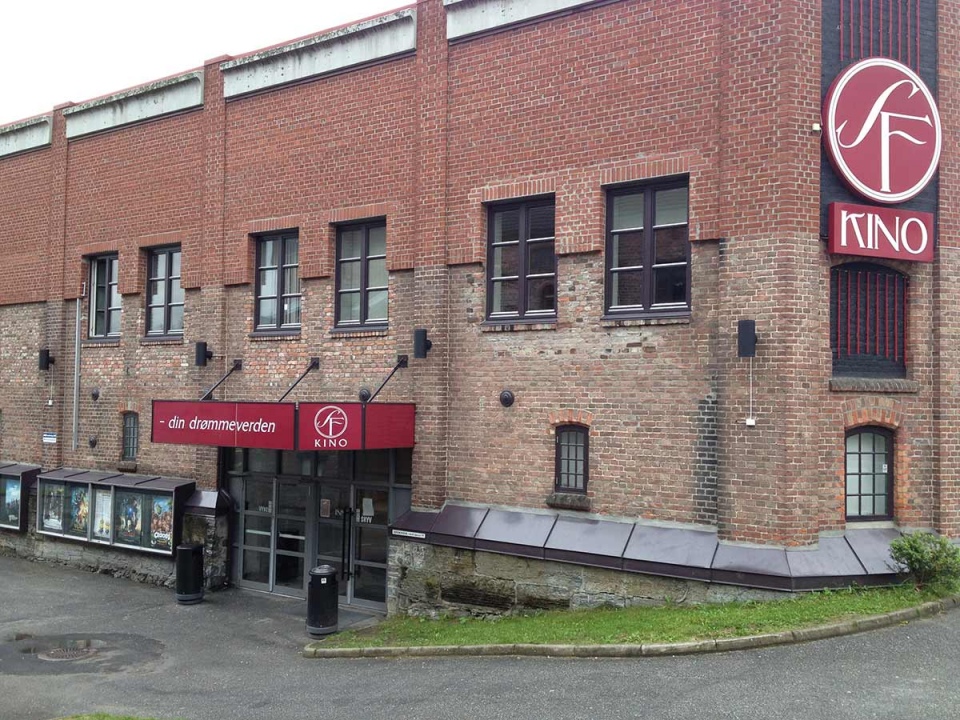
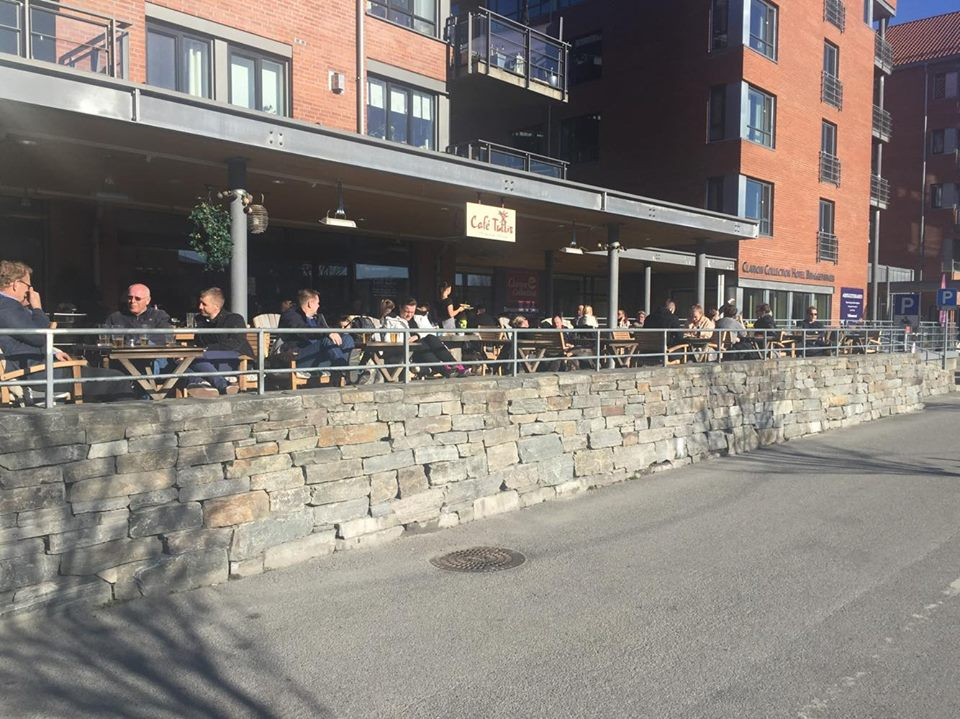
The first picture is of our cinema, Skien Kino. This is where we watch English-speaking, or sometimes Norwegian, movies. Movies in Norway are not dubbed, except for cartoons and some children's movies. The cinema has five rooms and a total of 549 seats. You can buy popcorn, chips, soda and candy. It is a very good cinema, but the candy might be a bit expensive.
Tullis, in the other picture, is a popular cafè in the city centre. It is one of the best cafès in Skien, both in atmosphere and in food. The cafè is located down by the river, and is in walking distance from the bus terminal, Landmannstorget. In front of the cafe there is a park with a large playground. You can also arrive by boat if you have one.
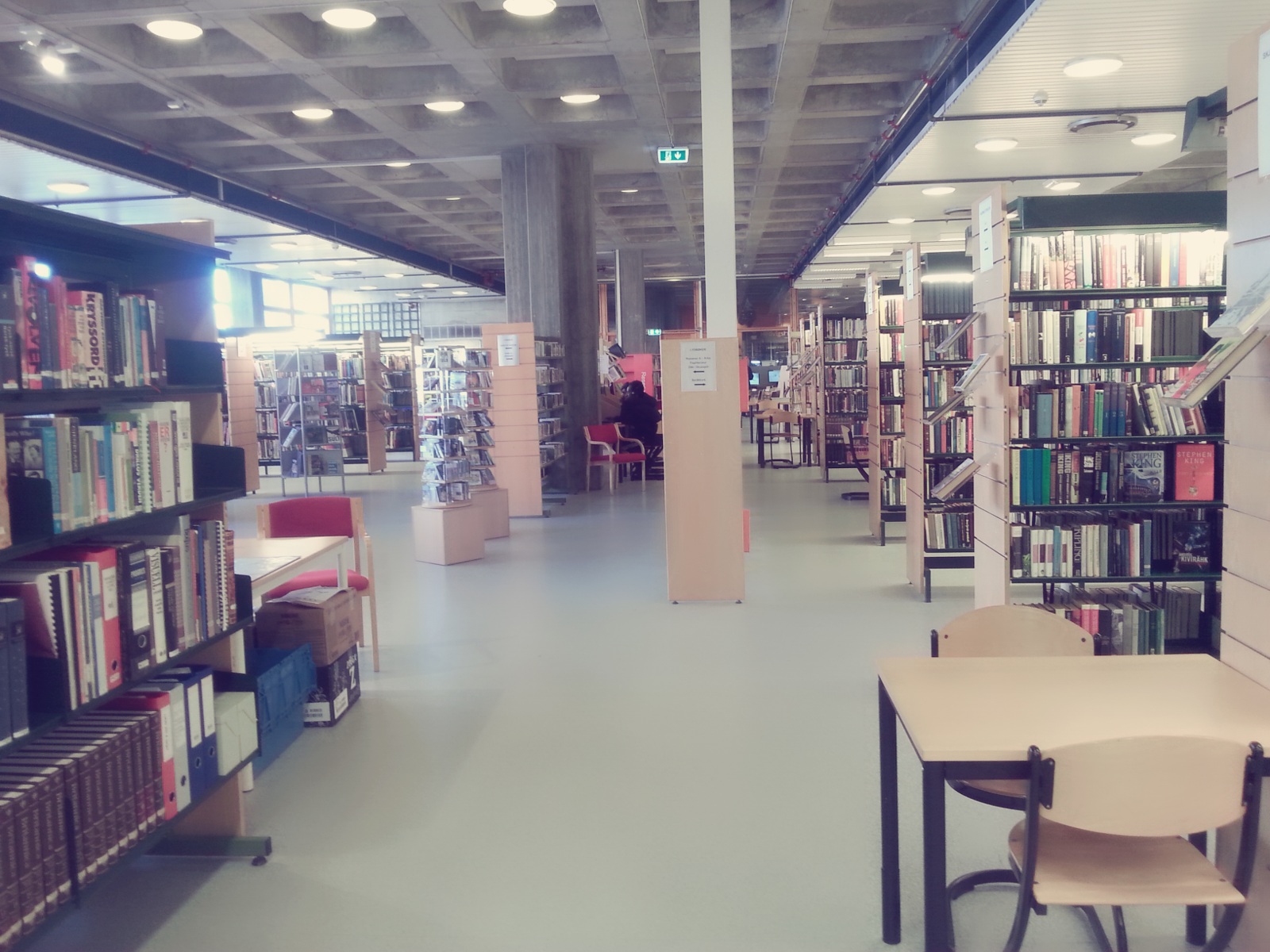
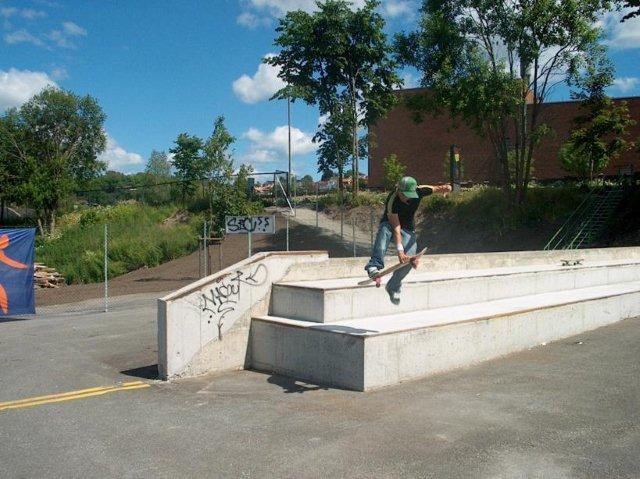
The City Library is a nice place to visit if you want to have a break from the hustle and bustle. You can read books, magazines or newspapers, listen to music, or use the computer and play playstation. There is also a cafe in the hall outside the library, Hedvigs hybel. Hedvig was Henrik Ibsen's sister and also one of the characters in his play, The Wild Duck.
In the other image you may see the skate park in Skien. This skate ramp is close to the mall Hercules. The area where the skate park is located is called Klosterøya. This is a place for young people who like adrenalin and to have fun skating. If you have some skills to show or practise, take a look at this place.
STREET ART/MURALS
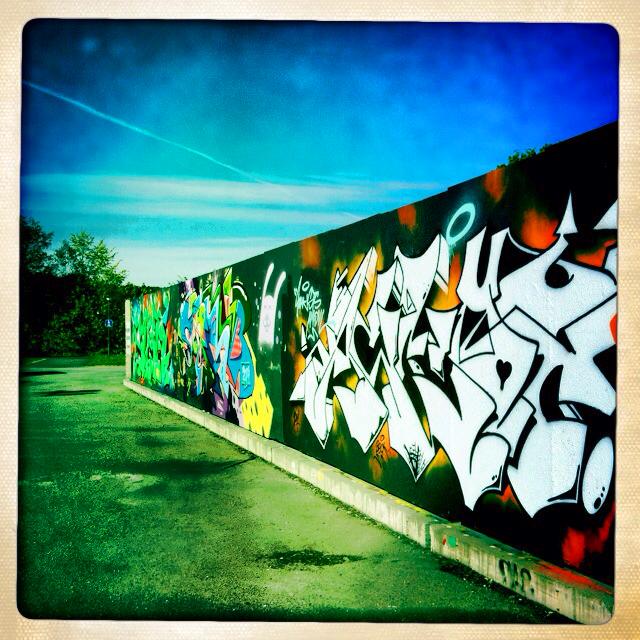
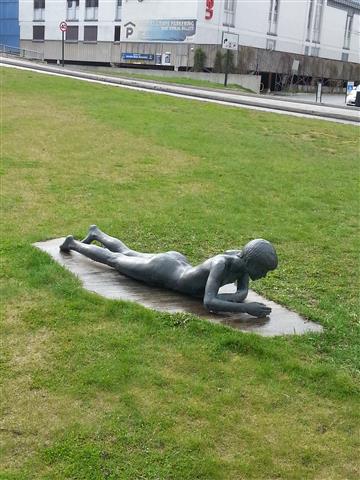
Close to the local skate park, there are several expressions of graffiti. In several spots in Skien you may also find female statues, either relaxing on the lawn, as here, or observing Skienselva, the River of Skien. Most of them are nude, and in one occasion an unknown person had put on a hat and a dress on one of the statues. There are also several art galleries in Skien.
A NATURAL LANDMARK
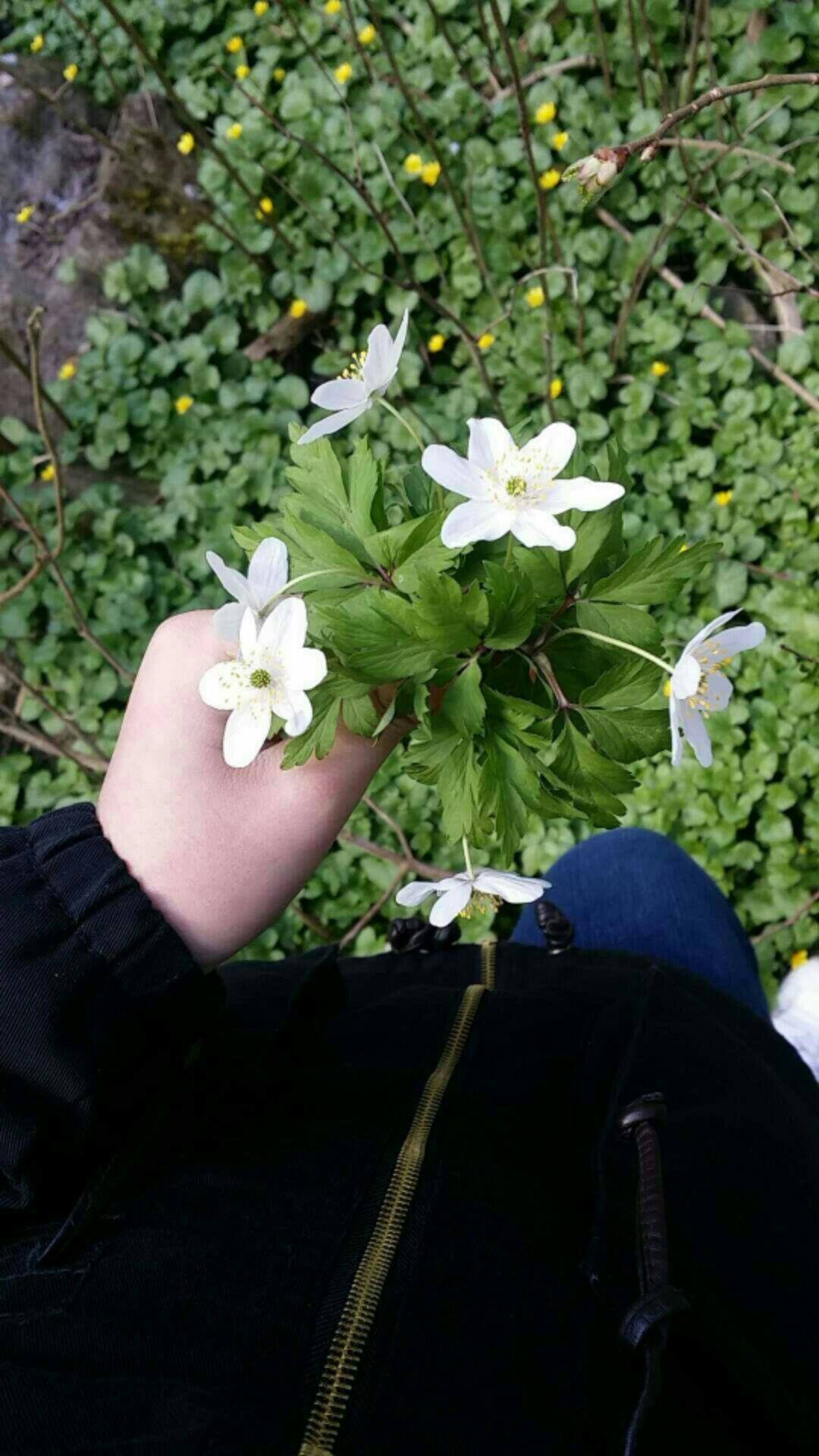
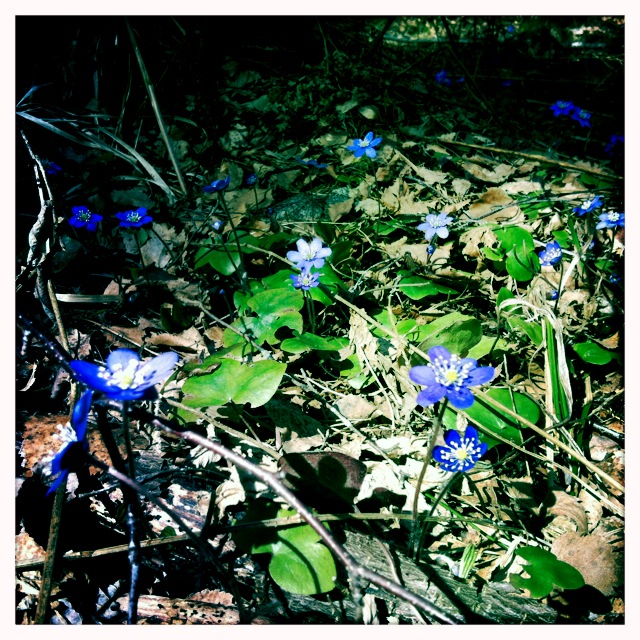
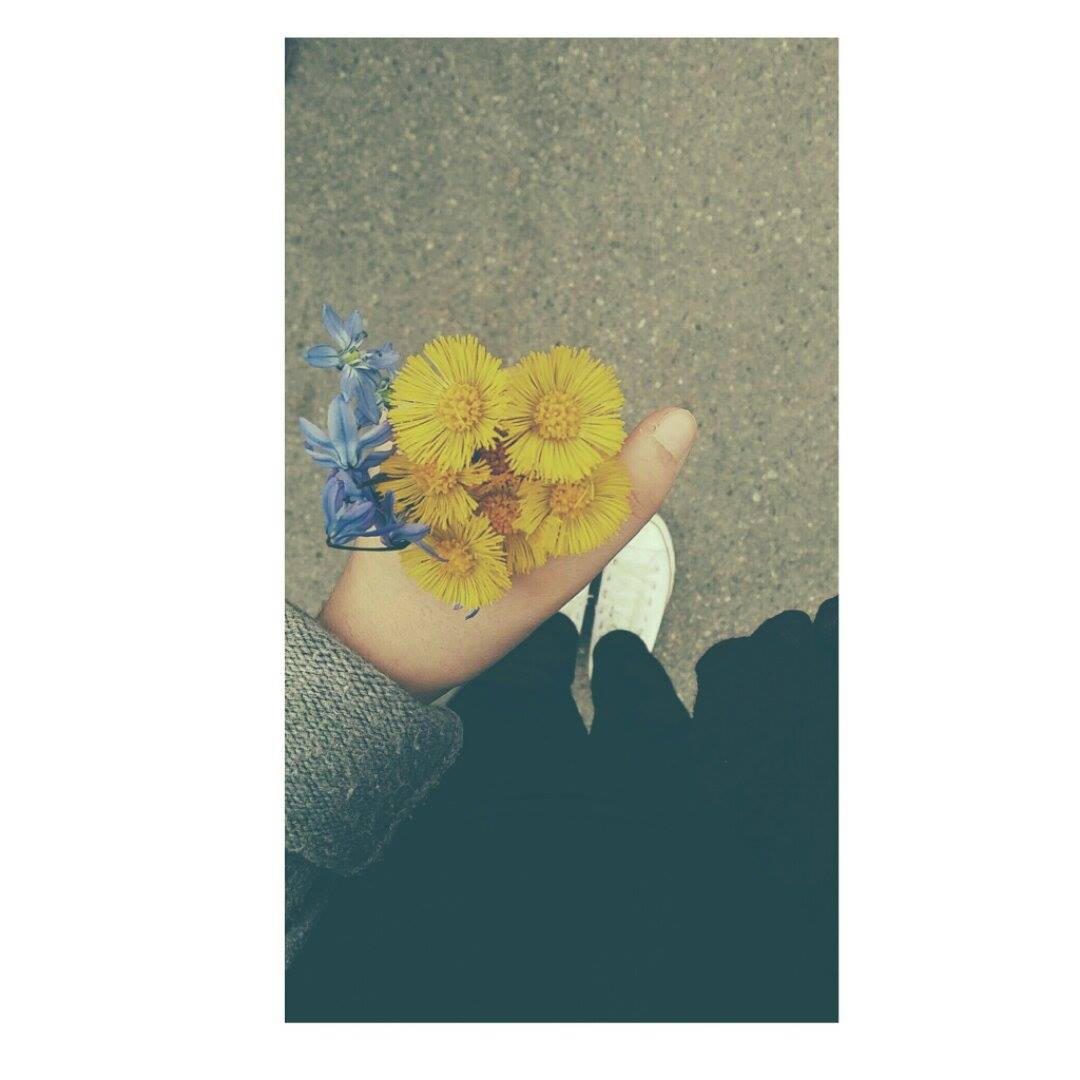
The hvitveis (wood anemone), blåveis (blue anemone) and løvetann (dandelion) are among the first flowers that appear in spring. If you have a chance, you should visit the island of Jomfruland in spring and experience the blossoming of the hvitveis there. It is just magic. Here you may see some pictures. Jomfruland is located in a neighbouring municipality, so you need to go by car or bus, and then take the ferry from the town called Kragerø.
A LOCAL LEGEND
The legend of the grey lady in the local park, Brekkeparken, is that every night she walks around the park protecting people from danger. The most famous story of her is when the caretaker of the park was walking around in the middle of the night. He suddenly felt a hand on his shoulder and looked around to see who it was, but no-one was there. He then turned around to see a tree fall over right where he would have been standing if he had not turned around.